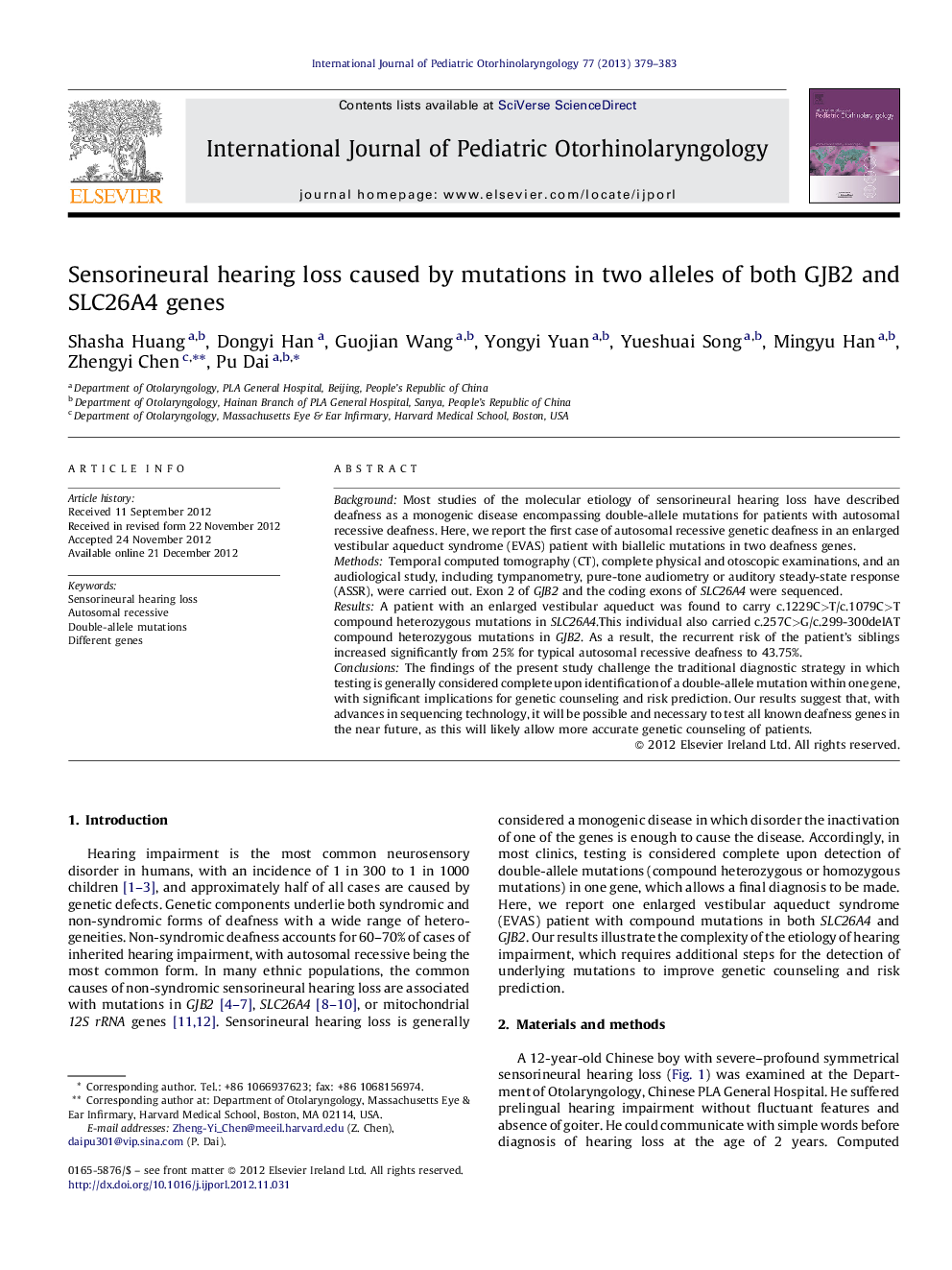| Article ID | Journal | Published Year | Pages | File Type |
|---|---|---|---|---|
| 6213644 | International Journal of Pediatric Otorhinolaryngology | 2013 | 5 Pages |
BackgroundMost studies of the molecular etiology of sensorineural hearing loss have described deafness as a monogenic disease encompassing double-allele mutations for patients with autosomal recessive deafness. Here, we report the first case of autosomal recessive genetic deafness in an enlarged vestibular aqueduct syndrome (EVAS) patient with biallelic mutations in two deafness genes.MethodsTemporal computed tomography (CT), complete physical and otoscopic examinations, and an audiological study, including tympanometry, pure-tone audiometry or auditory steady-state response (ASSR), were carried out. Exon 2 of GJB2 and the coding exons of SLC26A4 were sequenced.ResultsA patient with an enlarged vestibular aqueduct was found to carry c.1229C>T/c.1079C>T compound heterozygous mutations in SLC26A4.This individual also carried c.257C>G/c.299-300delAT compound heterozygous mutations in GJB2. As a result, the recurrent risk of the patient's siblings increased significantly from 25% for typical autosomal recessive deafness to 43.75%.ConclusionsThe findings of the present study challenge the traditional diagnostic strategy in which testing is generally considered complete upon identification of a double-allele mutation within one gene, with significant implications for genetic counseling and risk prediction. Our results suggest that, with advances in sequencing technology, it will be possible and necessary to test all known deafness genes in the near future, as this will likely allow more accurate genetic counseling of patients.
